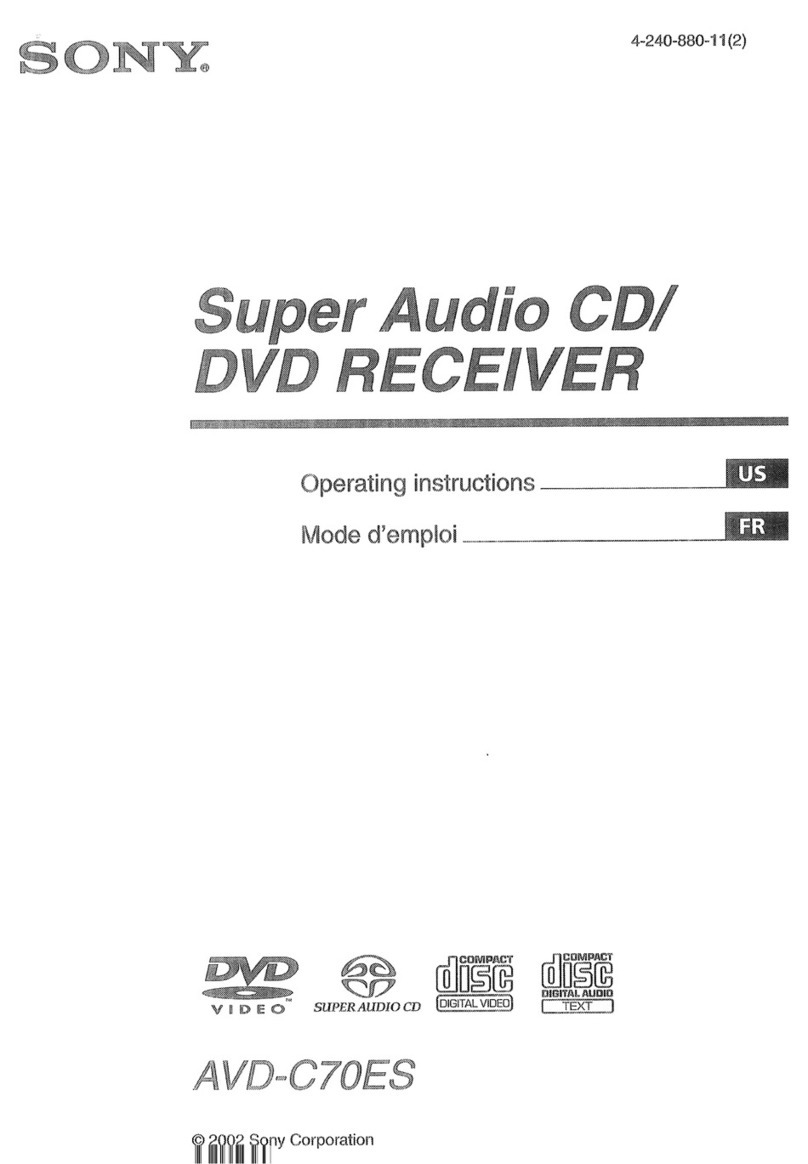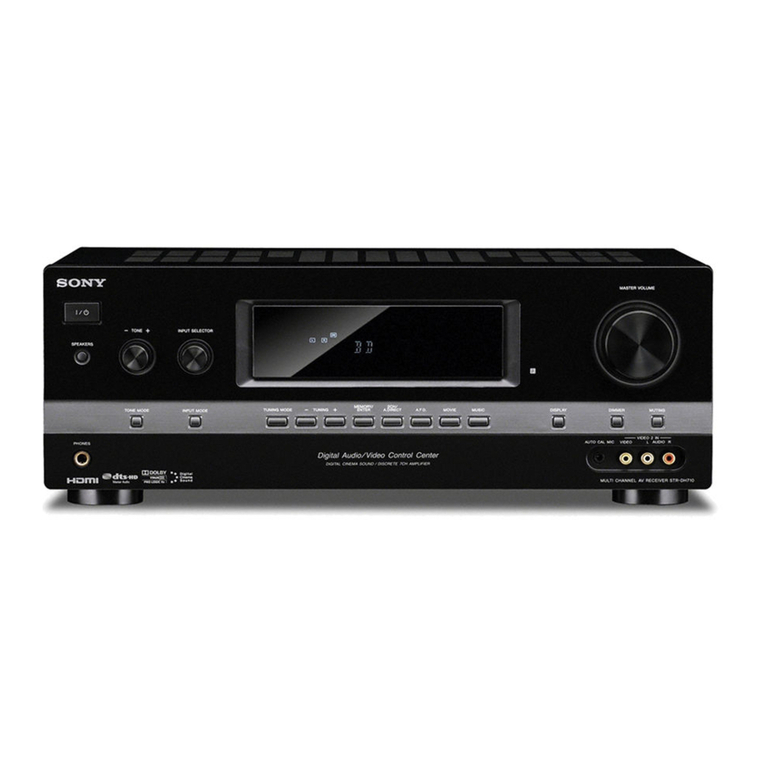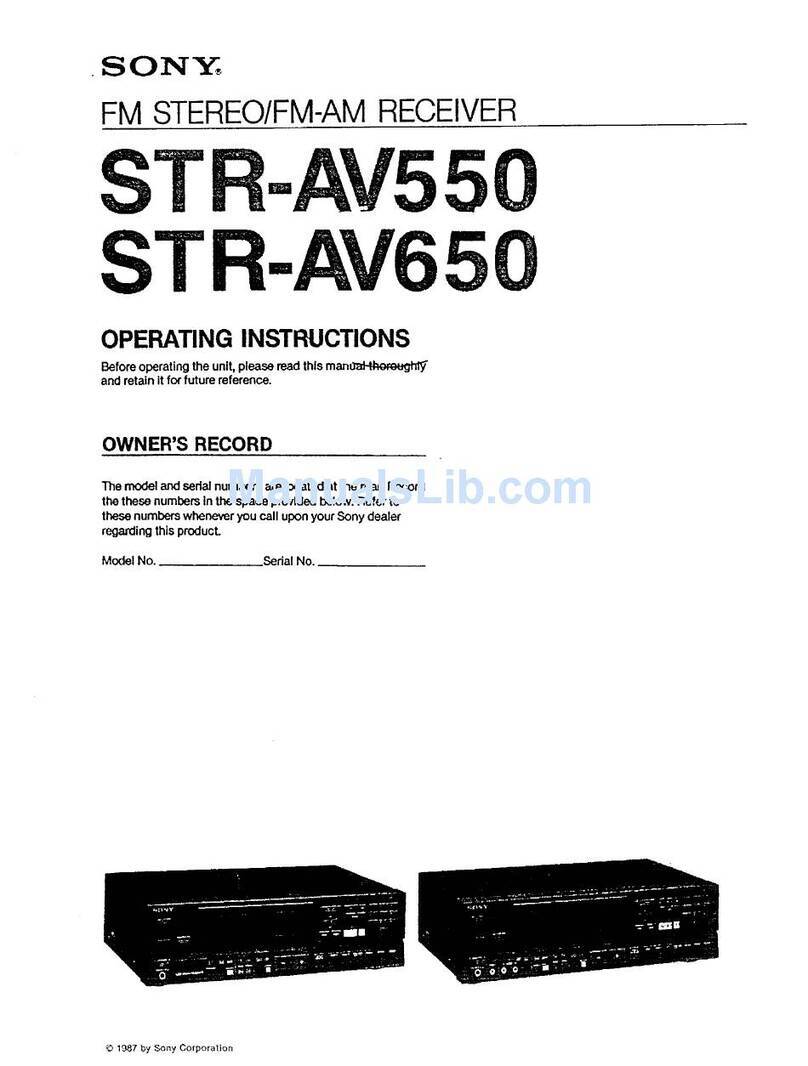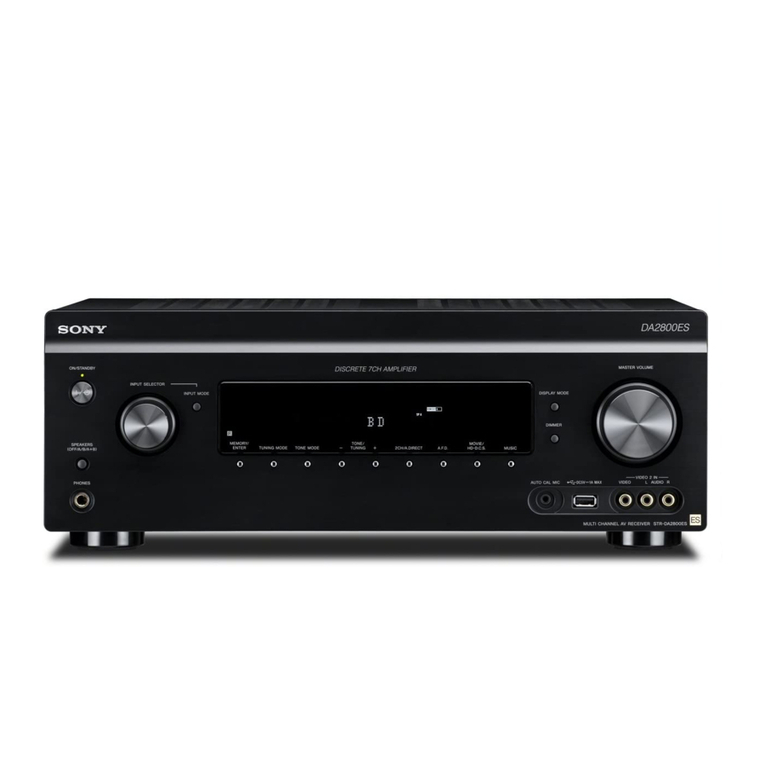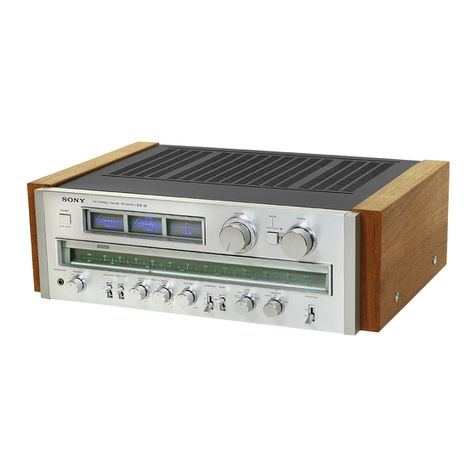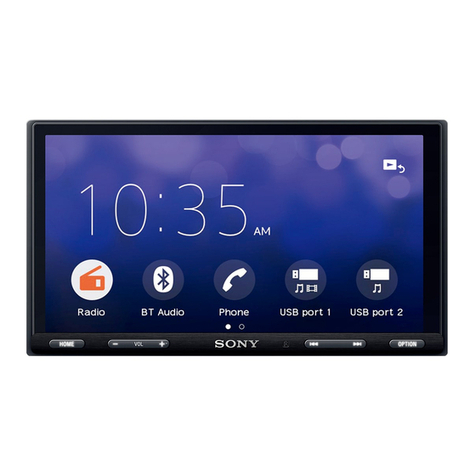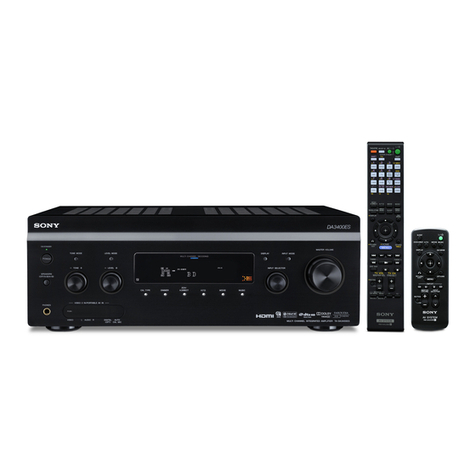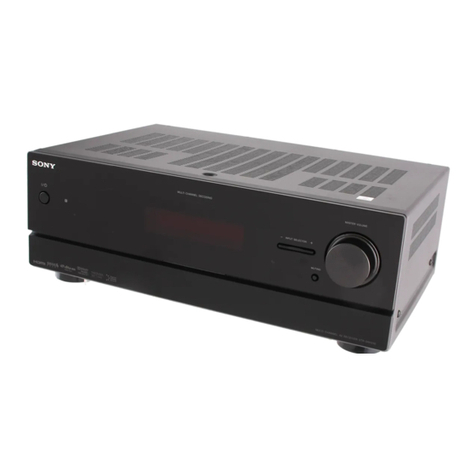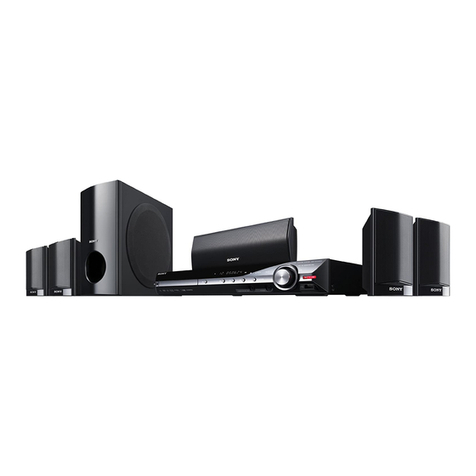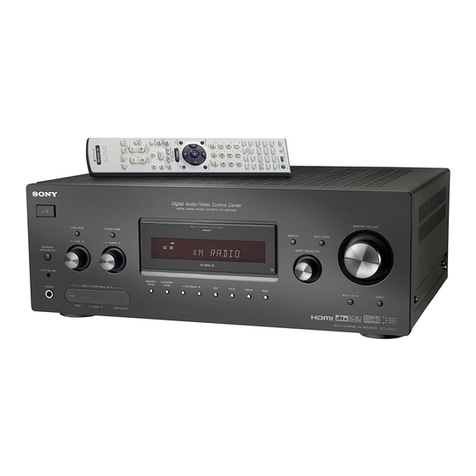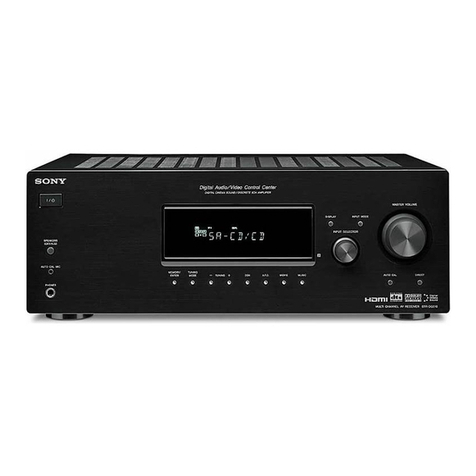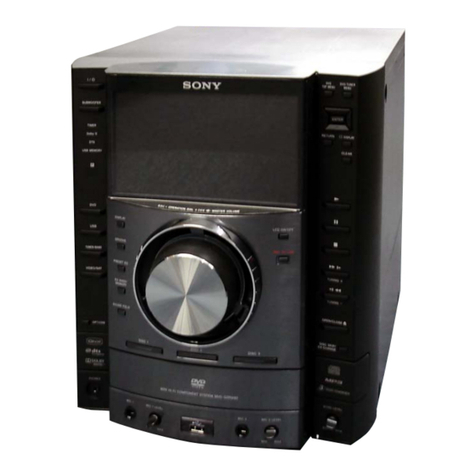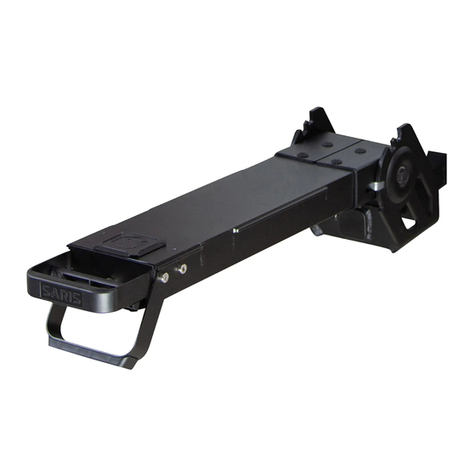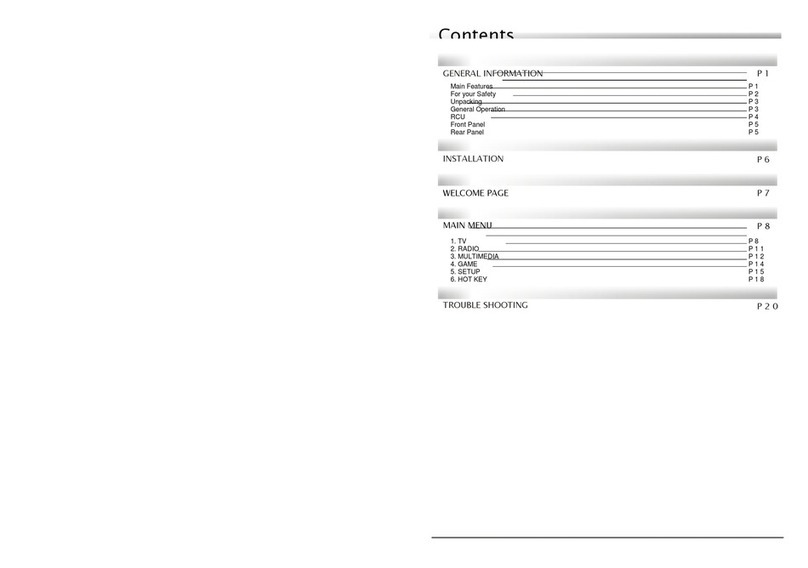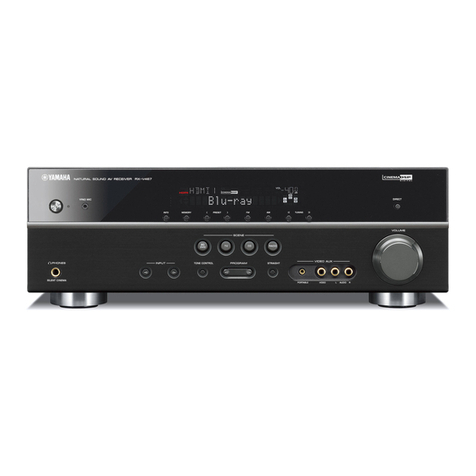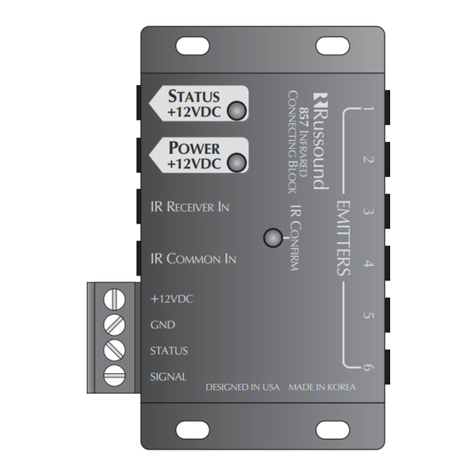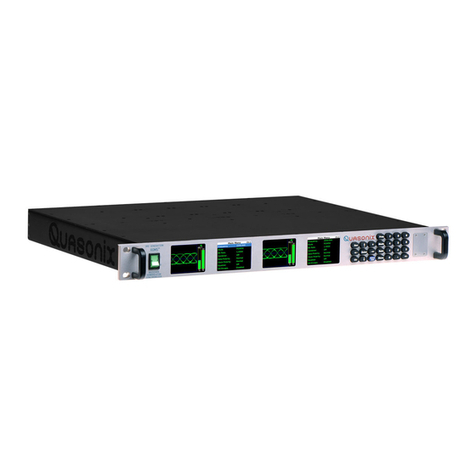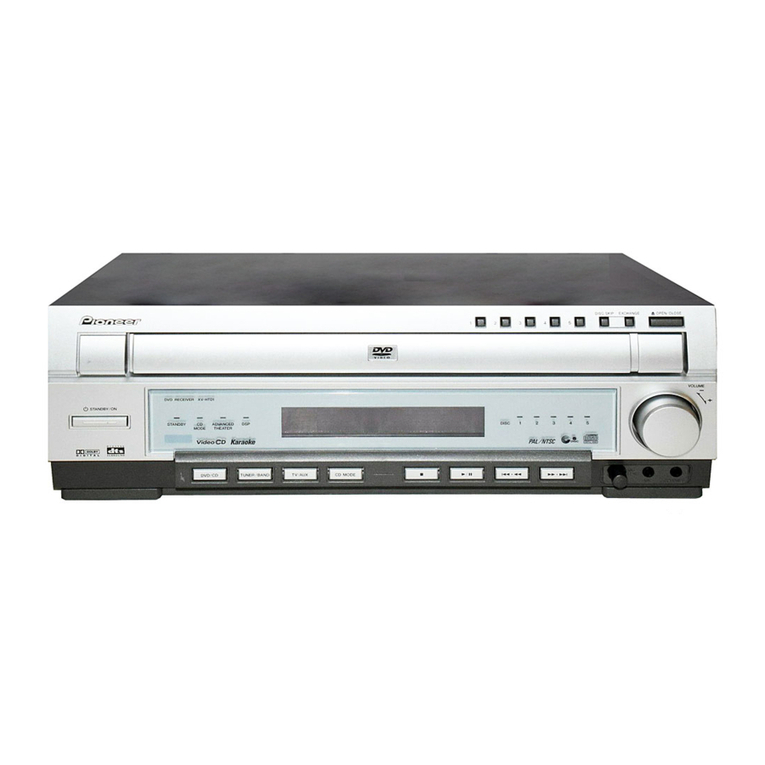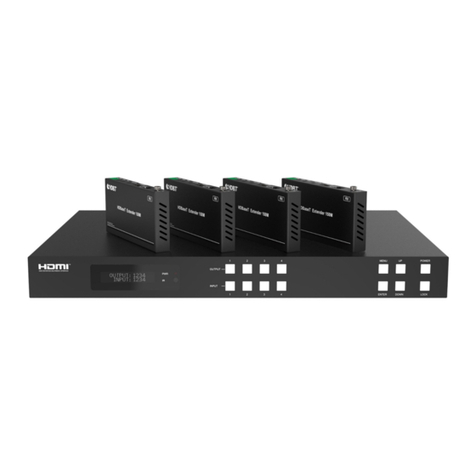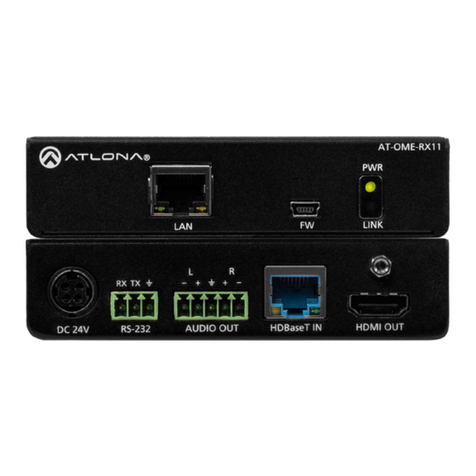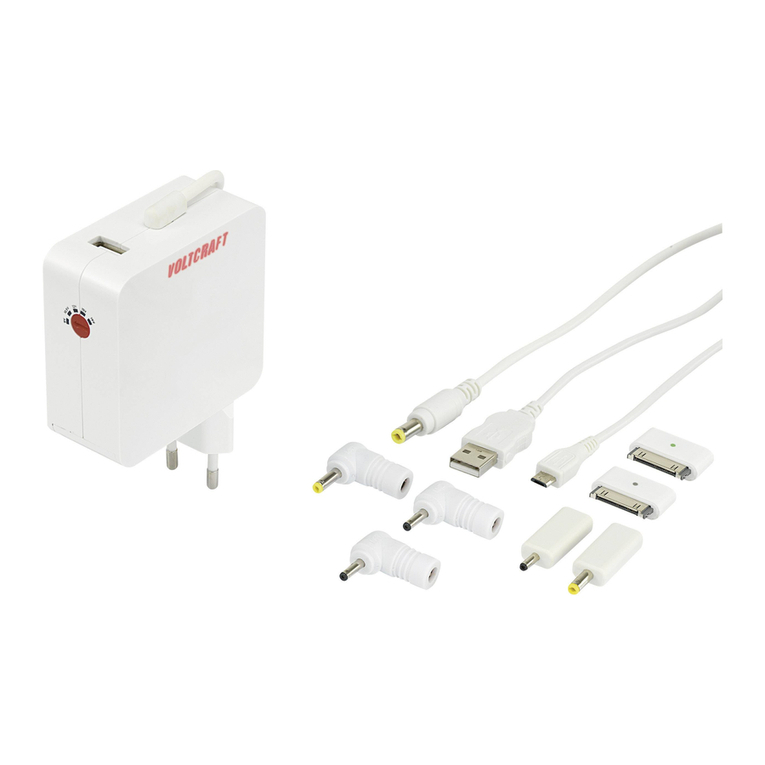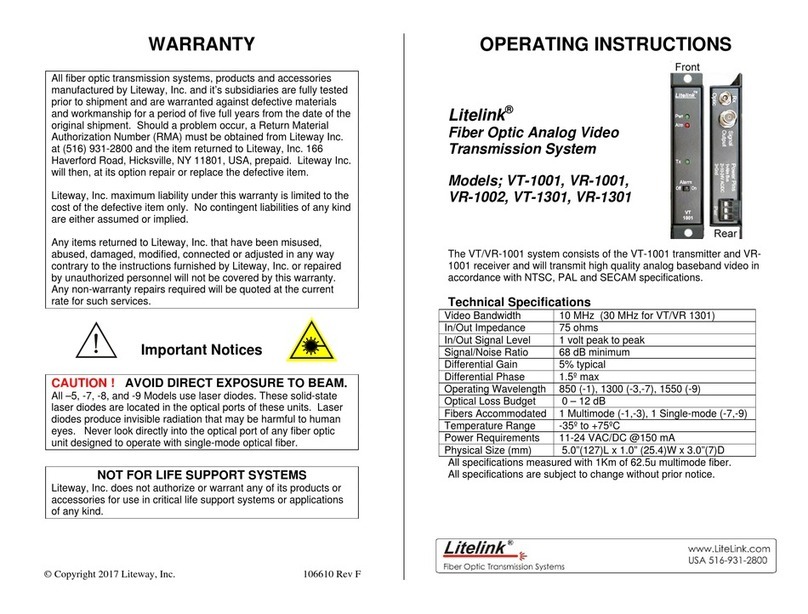
3
HCD-AZ1D
TABLE OF CONTENTS
1. SERVICING NOTES ................................................ 4
2. GENERAL ................................................................... 7
3. DISASSEMBLY
3-1. Disassembly Flow ........................................................... 10
3-2. Top Cover, DC Fan .......................................................... 11
3-3. AMP Board, AV Board, Tuner (FM/AM) ....................... 11
3-4. MPEG Board ................................................................... 12
3-5. MPEG Holder.................................................................. 12
3-6. DVD Panel Tray .............................................................. 13
3-7. DVD Loader (WXD) ....................................................... 13
3-8. Optical Pick-up DM3451-A (SF-HD65F)....................... 14
3-9. Front Panel Section ......................................................... 14
3-10. Cassette Mechanism Deck (CMAL5Z220C) .................. 15
3-11. KEY Board ...................................................................... 15
3-12. HP Board, MIC CONTROL Board ................................. 16
3-13. MAIN Board.................................................................... 16
3-14. POWER Board ................................................................ 17
3-15. Panel Cass........................................................................ 17
4. TEST MODE ............................................................... 18
5. MECHANICAL ADJUSTMENTS......................... 19
6. ELECTRICAL ADJUSTMENTS .......................... 19
7. DIAGRAMS
7-1. Block Diagram — MPEG-1 Section — ......................... 22
7-2. Block Diagram — MPEG-2 Section — ......................... 23
7-3. Block Diagram — USB Section —................................ 24
7-4. Block Diagram —AUDIO Section — ........................... 25
7-5. Block Diagram — PANEL/POWER Section — ............ 26
7-6. Printed Wiring Board — MAIN Section — ................... 27
7-7. Schematic Diagram — MAIN Section (1/4) — ............. 28
7-8. Schematic Diagram — MAIN Section (2/4) — ............. 29
7-9. Schematic Diagram — MAIN Section (3/4) — ............. 30
7-10. Schematic Diagram — MAIN Section (4/4) — ............. 31
7-11. Printed Wiring Board — MPEG Section (Side A) — .... 32
7-12. Printed Wiring Board — MPEG Section (Side B) — .... 33
7-13. Schematic Diagram — MPEG Section (1/3) — ............ 34
7-14. Schematic Diagram — MPEG Section (2/3) — ............ 35
7-15. Schematic Diagram — MPEG Section (3/3) — ............ 36
7-16. Printed Wiring Boards — KEY Section — .................... 37
7-17. Schematic Diagram — KEY Section — ........................ 38
7-18. Schematic Diagram — MIC CONTROL Section — ..... 39
7-19. Printed Wiring Board — AV Section —......................... 40
7-20. Schematic Diagram — AV Section — ........................... 40
7-21. Printed Wiring Board — AMP Section — ..................... 41
7-22. Schematic Diagram — AMP Section — ........................ 42
7-23. Printed Wiring Board — POWER Section — ................ 43
7-24. Schematic Diagram — POWER Section — .................. 44
8. EXPLODEDVIEWS
8-1. Overall Section ................................................................ 55
8-2. Front Panel Section ......................................................... 56
8-3. Chassis Section................................................................ 57
8-4. DVD Mechanism Deck Section ...................................... 58
9. ELECTRICAL PARTS LIST .................................. 59

